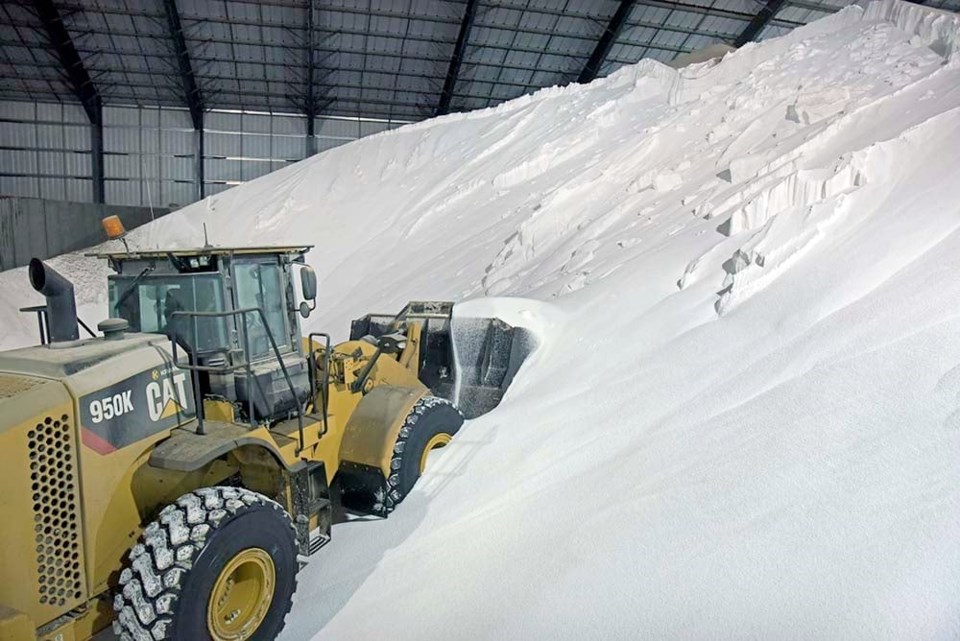SASKATOON — Global urea supplies are constrained, according to analysts.
One of the main reasons for that tightness is the lack of exports from China, said Harry Minihan, editor of Argus Nitrogen.
At the start of the year, he was anticipating China would ship out three to four million tonnes of the product during the May-to-October export window.
However, as of the end of July there has been barely any shipments.
The problem stems back to October 2021 when China took steps to curtail exports of the fertilizer ingredient to safeguard its domestic food and energy sectors during the pandemic.
Domestic urea prices are very high in China due to expanded acreage and strong industrial demand, so the country continues to produce 180,000 tonnes of the product every day.
StoneX fertilizer analyst Josh Linville said the industry used to be able to count on China exporting five to 5.5 million tonnes of the product annually.
However, it exported only 140,000 tonnes this year between January and June.
“Some people are thinking the last one-third of the year we will see them step into the marketplace and basically just start puking,” he said.
“But I would say we have not seen any indication of that yet.”
Industry officials at a fertilizer conference he recently attended in Nashville are predicting China will ship out 1.5 million tonnes by the end of the year, but that’s a far cry from what they used to export.
Minihan said urea production in Egypt has been hampered since May 20 by natural gas supply issues in that country.
Domestic gas production is dropping due to a natural decline at its Zohr gas field.
The Egyptian government also prioritized gas flows for cooling systems due to a summer heat wave. That caused rolling blackouts in
the industrial sector. Fertilizer producers have been running at about 80 per cent capacity as a result.
Egypt has become a net importer of liquefied natural gas for the first time in six years.
There have also been urea production problems in Malaysia, maintenance issues in Russia, and Nigeria recently stepped away from the market.
“In general, supply is very tight in the international market and the on-and-off-again nature of the Egyptian output is really causing a lot of stress on the supply side,” said Minihan.
Meanwhile, global urea demand has been restricted with Chicago corn futures prices recently falling below US$4 per bushel and Black Sea wheat trading in the $210 to $220 per tonne range.
“Urea is just looking increasingly expensive right now and that’s killing off a lot of demand,” said Minihan.
There has also been lacklustre buying from India, a market that usually sets the tone for urea prices.
The country ended up buying 134,000 tonnes of urea in a tender that closed July 8. That is far less than it typically purchases, which can range up to 2.2 million tonnes, because the country has amassed a stockpile of about 10 million tonnes.
“India has got plenty of availability and they’ve been well insulated by increased domestic production,” said Minihan.
“That has been keeping those urea stocks elevated.”
India imported 10 million tonnes of urea in 2022 and another 8.5 million tonnes in 2023. Through the first six months of 2024 it has imported only 1.9 million tonnes.
“India has really shown that they are dead set on increasing domestic production, which is increasing their inventories,” he said.
Minihan believes some of the supply restraints will begin to unwind in September once temperatures fall in Egypt and Russia’s maintenance season comes to an end.
“Once we get through what’s looking like a tight August, there might be room for prices to move to the downside for September loading,” he said.
Linville said India recently announced another urea tender, but the word is that they are only looking for about 700,000 to 800,000 tonnes of product.
“I just don’t think it’s going to be the supporting event a lot of folks were hoping it would be,” he said.
He believes urea prices are in a stalemate and will continue trading at today’s values plus or minus $25 to $30 per tonne.
The barge price in New Orleans was US$305 to $310 per tonne as of Aug. 14. Growers think that is still too high, but it is about one-third the value it was March 31, 2022, when the price peaked at $907.50.
Urea has “done a lot more work” in coming down in value compared to other crop inputs, said Linville.
Buyers are holding off on purchasing the product, but he worries that delay tactic could eventually put pressure on the logistics system.
Phosphate has not done as good a job of readjusting to the new economics of farming. The phosphate-to-grain price ratio is “incredibly high.”
Linville believes that will result in demand destruction for the nutrient this fall because the ratio could be getting worse due to the lack of Chinese exports and India getting significantly low on phosphate stocks.
“The biggest buyer in the world is going to be playing catch-up and they’re going to be making those purchases using government subsidized money,” he said.
“It’s a dangerous situation.”
Contact [email protected]
Related
About the Author




